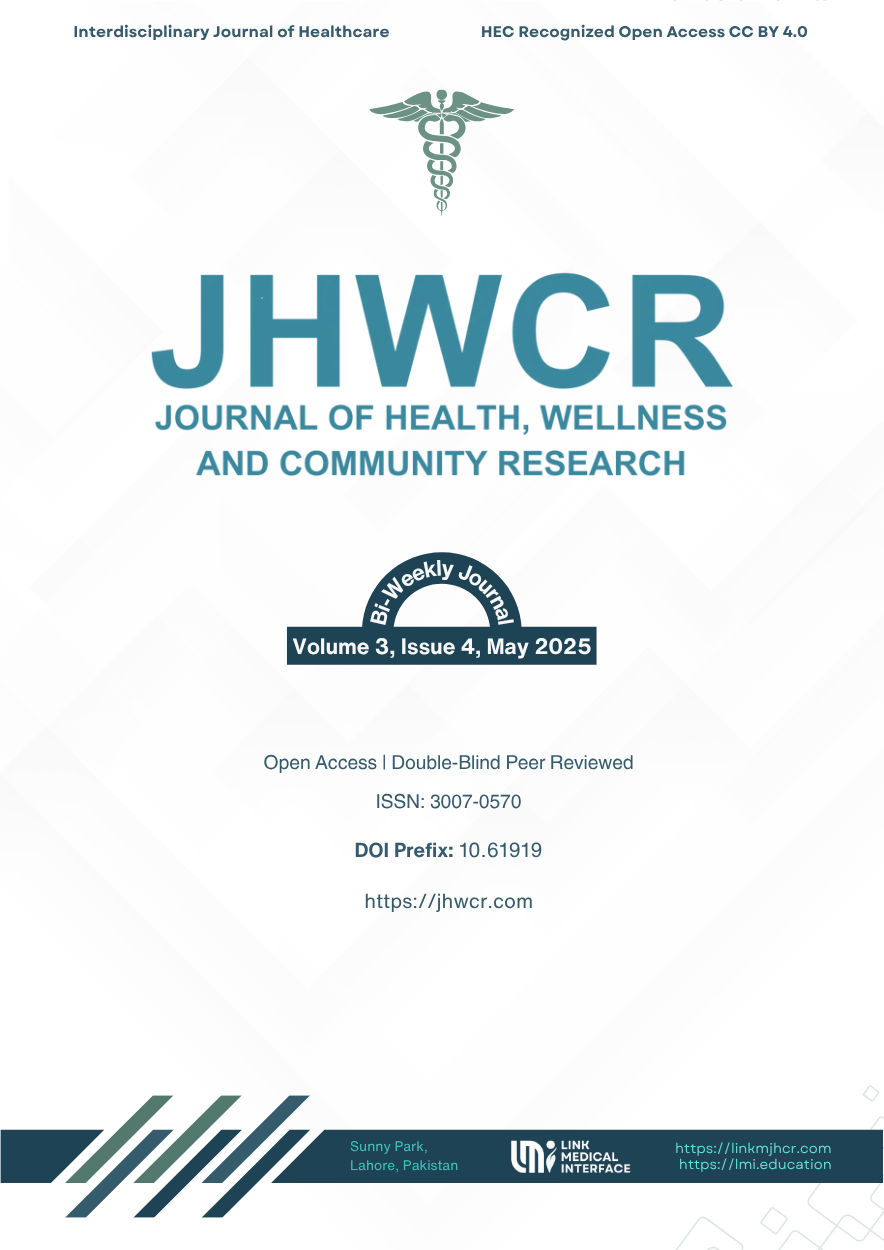Frequency of Carpal Tunnel Syndrome in Office Workers Using Computers with Respect to Working Hours
DOI:
https://doi.org/10.61919/p0jcgh96Keywords:
Carpal Tunnel Syndrome, Office Workers, Occupational Health, Computer Use, Ergonomics, Phalen’s Test, Functional Impairment.Abstract
Background: Carpal tunnel syndrome (CTS) is a prevalent occupational neuropathy among computer-based office workers, yet the association between daily working hours and CTS risk remains unclear, with limited data integrating both clinical and functional outcomes. Objective: This study aimed to determine the frequency of CTS in office workers using computers, analyze its relationship with daily working hours, and assess the functional impact using validated clinical tools. Methods: In this cross-sectional study, 93 office workers aged 20–60 years (n = 93) from Lahore, Pakistan, using computers for at least six hours daily, were recruited via convenience sampling. Individuals with a history of hand trauma, arthritis, prior CTS diagnosis, or pregnancy were excluded. Data were collected using the Boston Carpal Tunnel Questionnaire and Phalen’s test; primary outcomes were CTS prevalence and functional impairment. Ethical approval was granted by the institutional review board, adhering to the Helsinki Declaration. Statistical analysis employed SPSS version 27.0, with chi-square tests used to assess associations, and a significance threshold of p < 0.05. Results: CTS prevalence was 21.5% (20/93), with higher rates in females (33.3%) versus males (17.4%). The highest proportion of CTS cases was found among those working 8 hours daily, but no significant association existed between working hours and CTS prevalence (χ² = 1.06, p = 0.915). Most affected participants reported only mild symptoms or impairment, as per the Boston Questionnaire. Conclusion: CTS is common among computer-using office workers, but daily working hours alone do not significantly increase risk. Ergonomic interventions and early screening should be prioritized over solely limiting computer exposure to reduce CTS-related disability in occupational settings.
Downloads
Published
Issue
Section
License
Copyright (c) 2025 Fatima Shaukat, Muhammad Mehmood Alam, Zahid Mehmood Bhatti, Ayesha Nawal, Ayais Khan Niazi, Humna Irfan, Sameen Saeed (Author)

This work is licensed under a Creative Commons Attribution 4.0 International License.


